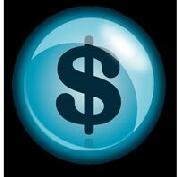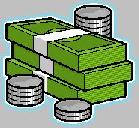
 |
|
| Financial Terms | |
| total cost to account for |
|
Information about financial, finance, business, accounting, payroll, inventory, investment, money, inventory control, stock trading, financial advisor, tax advisor, credit.
Main Page: credit, payroll, stock trading, inventory, tax advisor, accounting, financial advisor, business, |
Definition of total cost to account for
total cost to account forthe sum of the costs in beginning
Related Terms:Accelerated cost recovery system (ACRS)Schedule of depreciation rates allowed for tax purposes. Accounting exposureThe change in the value of a firm's foreign currency denominated accounts due to a Accounting earningsEarnings of a firm as reported on its income statement. Accounting insolvencytotal liabilities exceed total assets. A firm with a negative net worth is insolvent on Accounting liquidityThe ease and quickness with which assets can be converted to cash. Accounts payableMoney owed to suppliers. Accounts receivableMoney owed by customers.  Accounts receivable turnoverThe ratio of net credit sales to average accounts receivable, a measure of how Agency cost viewThe argument that specifies that the various agency costs create a complex environment in Agency costsThe incremental costs of having an agent make decisions for a principal. All-in costtotal costs, explicit and implicit. Average accounting returnThe average project earnings after taxes and depreciation divided by the average Average age of accounts receivableThe weighted-average age of all of the firm's outstanding invoices. Average cost of capitalA firm's required payout to the bondholders and to the stockholders expressed as a Bankruptcy cost viewThe argument that expected indirect and direct bankruptcy costs offset the other Capital accountNet result of public and private international investment and lending activities.  Carring costscosts that increase with increases in the level of investment in current assets. Concentration accountA single centralized account into which funds collected at regional locations Cost company arrangementArrangement whereby the shareholders of a project receive output free of Cost of capitalThe required return for a capital budgeting project. Cost of carryRelated: Net financing cost Cost of fundsInterest rate associated with borrowing money. Cost of lease financingA lease's internal rate of return. Cost of limited partner capitalThe discount rate that equates the after-tax inflows with outflows for capital Cost-benefit ratioThe net present value of an investment divided by the investment's initial cost. Also called Cumulative Translation Adjustment (CTA) accountAn entry in a translated balance sheet in which gains Current accountNet flow of goods, services, and unilateral transactions (gifts) between countries.  Discretionary accountaccounts over which an individual or organization, other than the person in whose Equivalent annual costThe equivalent cost per year of owning an asset over its entire life. Execution costsThe difference between the execution price of a security and the price that would have Financial distress costsLegal and administrative costs of liquidation or reorganization. Also includes Fixed costA cost that is fixed in total for a given period of time and for given production levels. Friction costscosts, both implied and direct, associated with a transaction. Such costs include time, effort, Generally Accepted Accounting Principals (GAAP)A technical accounting term that encompasses the Incremental costs and benefitscosts and benefits that would occur if a particular course of action were Information costsTransaction costs that include the assessment of the investment merits of a financial asset. IRA/Keogh accountsSpecial accounts where you can save and invest, and the taxes are deferred until money Joint accountAn agreement between two or more firms to share risk and financing responsibility in Margin account (Stocks)A leverageable account in which stocks can be purchased for a combination of Market impact costsAlso called price impact costs, the result of a bid/ask spread and a dealer's price concession. Market timing costscosts that arise from price movement of the stock during the time of the transaction Money market demand accountAn account that pays interest based on short-term interest rates. Net financing costAlso called the cost of carry or, simply, carry, the difference between the cost of financing Omnibus accountAn account carried by one futures commission merchant with another futures commission Open accountArrangement whereby sales are made with no formal debt contract. The buyer signs a receipt, Opportunity cost of capitalExpected return that is foregone by investing in a project rather than in Opportunity costsThe difference in the performance of an actual investment and a desired investment Price impact costsRelated: market impact costs Purchase accountingMethod of accounting for a merger in which the acquirer is treated as having purchased Regulatory accounting proceduresaccounting principals required by the FHLB that allow S&Ls to elect Replacement costcost to replace a firm's assets. Return on total assetsThe ratio of earnings available to common stockholders to total assets. Round-trip transactions costscosts of completing a transaction, including commissions, market impact Search costscosts associated with locating a counterparty to a trade, including explicit costs (such as Shortage costcosts that fall with increases in the level of investment in current assets. Statement of Financial Accounting Standards No. 8This is a currency translation standard previously in Statement of Financial Accounting Standards No. 52This is the currency translation standard currently Sunk costscosts that have been incurred and cannot be reversed. Sweep accountaccount in which the bank takes all of the excess available funds at the close of each business Total asset turnoverThe ratio of net sales to total assets. Total debt to equity ratioA capitalization ratio comparing current liabilities plus long-term debt to Total dollar returnThe dollar return on a nondollar investment, which includes the sum of any Total returnIn performance measurement, the actual rate of return realized over some evaluation period. In Total revenuetotal sales and other revenue for the period shown. Known as "turnover" in the UK. Trading costscosts of buying and selling marketable securities and borrowing. Trading costs include Transactions costsThe time, effort, and money necessary, including such things as commission fees and the True interest costFor a security such as commercial paper that is sold on a discount basis, the coupon rate TT&L accountTreasury tax and loan account at a bank. Variable costA cost that is directly proportional to the volume of output produced. When production is zero, Weighted average cost of capitalExpected return on a portfolio of all the firm's securities. Used as a hurdle Zero-balance account (ZBA)A checking account in which zero balance is maintained by transfers of funds ACCOUNTS PAYABLEAmounts a company owes to creditors. ACCOUNTS RECEIVABLEAmounts owed to a company by customers that it sold to on credit. total accounts receivable are usually reduced by an allowance for doubtful accounts. Cost basisAn asset’s purchase price, plus costs associated with the purchase, like installation fees, taxes, etc. Cost of goods soldThe cost of merchandise that a company sold this year. For manufacturing companies, the cost of raw MACRS (Modified Accelerated Cost Recovery System)A depreciation method created by the IRS under the Tax Reform Act of 1986. Companies must use it to depreciate all plant and equipment assets installed after December 31, 1986 (for tax purposes). RATE OF RETURN ON TOTAL ASSETSThe percentage return or profit that management made on each dollar of assets. The formula is: Absorption costingA method of costing in which all fixed and variable production costs are charged to products or services using an allocation base. AccountAn explanation or report in financial terms about the transactions of an organization. AccountabilityThe process of satisfying stakeholders in the organization that managers have acted in the best interests of the stakeholders, a result of the stewardship function of managers, which takes place through accounting. AccountingA collection of systems and processes used to record, report and interpret business transactions. Accounting equationThe representation of the double-entry system of accounting such that assets are equal to liabilities plus capital. Accounting periodThe period of time for which financial statements are produced – see also financial year. Accounting rate of return (ARR)A method of investment appraisal that measures Accounting systemA set of accounts that summarize the transactions of a business that have been recorded on source documents. Accounts‘Buckets’ within the ledger, part of the accounting system. Each account contains similar transactions (line items) that are used for the production of financial statements. Or commonly used as an abbreviation for financial statements. Accruals accountingA method of accounting in which profit is calculated as the difference between income when it is earned and expenses when they are incurred. Activity-based costingA method of costing that uses cost pools to accumulate the cost of significant business activities and then assigns the costs from the cost pools to products or services based on cost drivers. Avoidable costscosts that are identifiable with and able to be influenced by decisions made at the business Cash accountingA method of accounting in which profit is calculated as the difference between income Cash costThe amount of cash expended. CostA resource sacrificed or forgone to achieve a specific objective (Horngren et al.), defined Cost behaviourThe idea that fixed costs and variable costs react differently to changes in the volume of Cost centreA division or unit of an organization that is responsible for controlling costs. Cost controlThe process of either reducing costs while maintaining the same level of productivity or maintaining costs while increasing productivity. Cost driverThe most significant cause of the cost of an activity, a measure of the demand for an activity Cost objectAnything for which a measurement of cost is required – inputs, processes, outputs or responsibility centres. Cost of capitalThe costs incurred by an organization to fund all its investments, comprising the risk-adjusted Cost of goods soldSee cost of sales. Related to : financial, finance, business, accounting, payroll, inventory, investment, money, inventory control, stock trading, financial advisor, tax advisor, credit. |